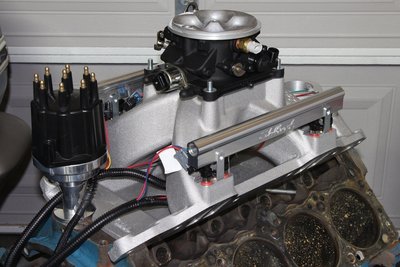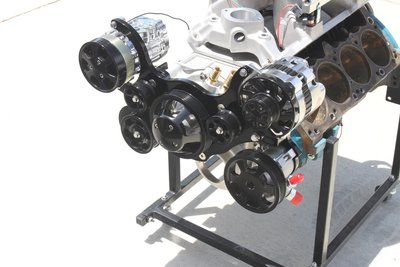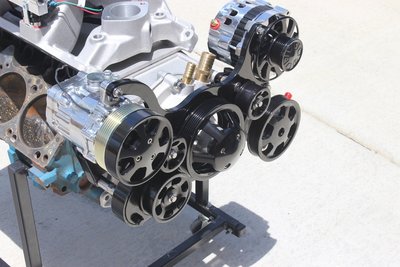that is nice. a great read.
You are using an out of date browser. It may not display this or other websites correctly.
You should upgrade or use an alternative browser.
You should upgrade or use an alternative browser.
My 1965 Road Racing Belvedere II
- Thread starter 65RoadRacer
- Start date
65RoadRacer
Well-Known Member
I assume that was written before you decided to do the job change...
It was a good write up too, thanks...
Good luck sounds like fun...
--------------------------------------------------------------
just curious;
Are they the Street Muscle publishers helping pay for any of that stuff ?
or is the Control Freak co. sponsoring any of it for advert. ?
or promotional considerations etc. ?
hopefully a discount @ min. ?
If so, will your new gig do the same thing ?
We finished the install before MATS, but wanted to get some driving impressions for the article and make sure everything was working well before we published, so that's why the delay. The front is a complete bolt in, whereas the rear took some welding and fabrication work. We tied that to the custom Moser rearend.
So the $64k question that I know a lot of people wonder... how does this all work when you do a build for a magazine. Well, this turned out to be pretty long, so ... enjoy!
The magazine itself, at least ours, doesn't pay for anything, and over time I paid quite a bit for anything I couldn't install myself. For example, the entire suspension/mini tubs cost me a bit over $2000 to install. Parts are typically provided by the clients in exchange for the full write up and technical info.
While some people would think, "oh, you get free parts" it's actually a long, involved process that takes a lot of time before you even get the parts. Granted, if I didn't work where I worked I likely couldn't afford everything I did to the car, but that doesn't mean that none of it would get done. The job makes it easier to get parts installed, but it's never really "free" in any sense of the word. When I tell my friends the process I go through to get one part installed, they typically tell me, "forget it, you can have your job, I'll buy my parts." LOL
To put a count to the number of words I write in a single year for articles, it breaks down to this: 4 full feature articles per month (includes heavy tech, car features event coverage), 15-20 short form articles each month (includes news, car features, event coverage, client news articles) for a whopping total of over 120,000 words per year in articles. Since I began this job five years ago, I've written over half a million words. Come SEMA time, we write roughly 25-35 articles in a two week period.
To give you somewhat of an idea, here's the process to borrow a Hellcat from Dodge for a week. While many thought that was a cool perk, it was actually a lot of work, with tons of planning:
- Develop a story idea that would be interesting to the readers.
- What's your goal? What is the purpose of the test drive.
- Pitch this to my bosses, get approval for story and word count, and how much tech will be involve.
- Pitch the story to Chrysler, let them know any follow up, where we'll shoot, what we'll shoot, where we'll take it for exposure to the car, and estimate how many views we'll get.
- Get with our video team, write a script, write out shot list, develop story concept and find shot location that fits story idea.
- Acquire vehicle, plan out the week, contact clubs, groups, and schedule visits to various places to show off the car.
- Main goal: keep appointments - take the car to several places, plan the 'long drive', show off the car and put several hundred miles on it during the week, take 100s of photos.
- Now the fun part begins: chronical the week and layout the article. Write 1500-2000 words about the car, where you went, what the experience is like, and get tech info from manufacturer about vehicle and add details to the article.
Some parts cost a lot, some not so much, but the amount of work for each part is the same. We don't always do videos on the parts, but if we do then the process above with the video team is a big part of it. With parts installation, testing those parts is a part of it - we can't just install a part and say, "it fits, here's a pretty picture, the manufacture said it's DOM .083 wall steel" We have to cover the install, get quotes about the product, if it's suspension - test it out and provide feedback. It's a bit of work for very low pay.
The other thing is extra costs: borrowing the Hellcat for a week, I paid for all fuel costs. If I install parts and go to Willow Springs to race, that's $700 a year out of my pocket (track fee, fuel, overnight lodging). The other thing that people ask about is event fees. I covered roughly 12-16 events each year. If I don't write an article about the event, I pay, but if I had to pay for all events, I wouldn't be going because I can't afford it. So you get in for free but work the event. For example, I was at MATS and every time I went back to my car I was told that people were there asking for me. I wish I could have been there, but I was out taking photos and, well... working.
For an event: we do event coverage (sometimes pre and post coverage), we meet with car owners to get a few car feature stories, meet with clients/vendors, and take several hundred photos at the event.
So now you have a better idea of what we do, or at least what I did, for a living. The new gig will be writing car features and possibly some tech, and attending shows, but all work will be specifically for the company I'm going to be working for: Champion Cooling. It's a great company with a tremendous growth over the past few years. I've know some of the people there for years and am excited about this new chapter in my life and working more on the manufacturer's side of things.
I'll still be a regular contributor to Street Muscle Magazine as long as they will have me, and we are, for now, keeping Project Track Attack on the pages and continuing on with the plan, which includes the new engine currently being built. While sometimes we do have clients supply long blocks, I am actually paying about $3000 out of my own pocket on this engine build, so while we're getting a lot of cool components from clients (more writing!) it does impact my own wallet considerably.
Again, thanks for the ride and allowing me to share my build with you all here. There's a little bit more to come and some more track time to see how much more we can reduce track times, which, incidentally, have been reduced over 8 seconds in five trips to Willow Springs. Our biggest deficit: power... need more power!
I will keep posting as we continue with the build. Thanks!
Last edited:
- Local time
- 5:09 PM
- Joined
- Jan 16, 2011
- Messages
- 78,641
- Reaction score
- 126,621
- Location
- NorCal Sierras
Thanks for sharing
that's interesting procedure & work load
I look forward to more contributions & articles
that's interesting procedure & work load

I look forward to more contributions & articles

65RoadRacer
Well-Known Member
As I mentioned, we're building the new engine, a stroked 360 with Magnum heads. The engine block is at the machine shop and JE Pistons is custom building pistons for us. I've started collecting some parts and have a mock-up block in the garage... so here are a couple of pics for you. The front drive kit is a Billet Specialties TruTrac Serpentine System. It's very simple to install and will work on the 318-360, with LA or Magnum heads, and if you swap the radiator, it will also work on a Poly 318 (which is where it will go for the time being once the new radiator shows up.






Zeppelin264
Well-Known Member
That sure does look like the Holley Dual Sync dist for timing control....

65RoadRacer
Well-Known Member
Good eye.... it's a dual sync distributor, but it's Comp'sThat sure does look like the Holley Dual Sync dist for timing control....
Similar threads
- Replies
- 8
- Views
- 812
- Replies
- 6
- Views
- 418
- Replies
- 18
- Views
- 1K















